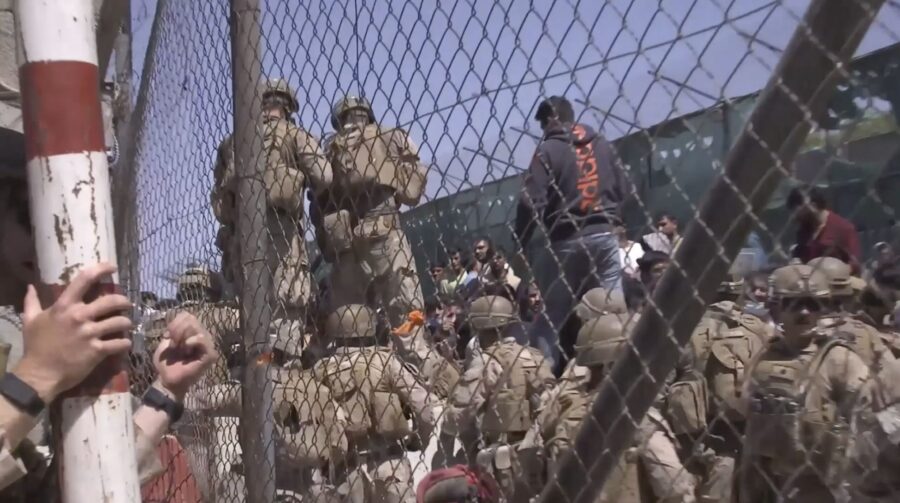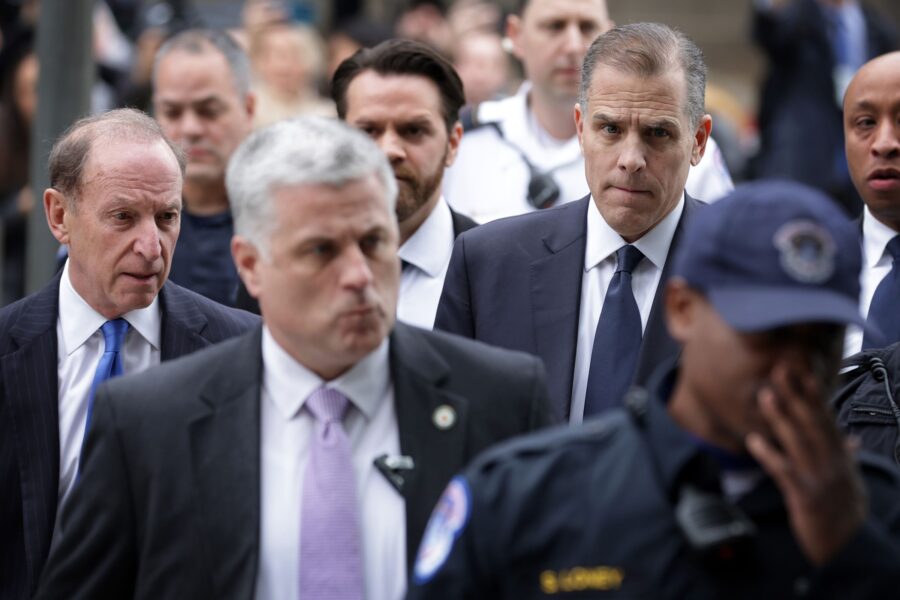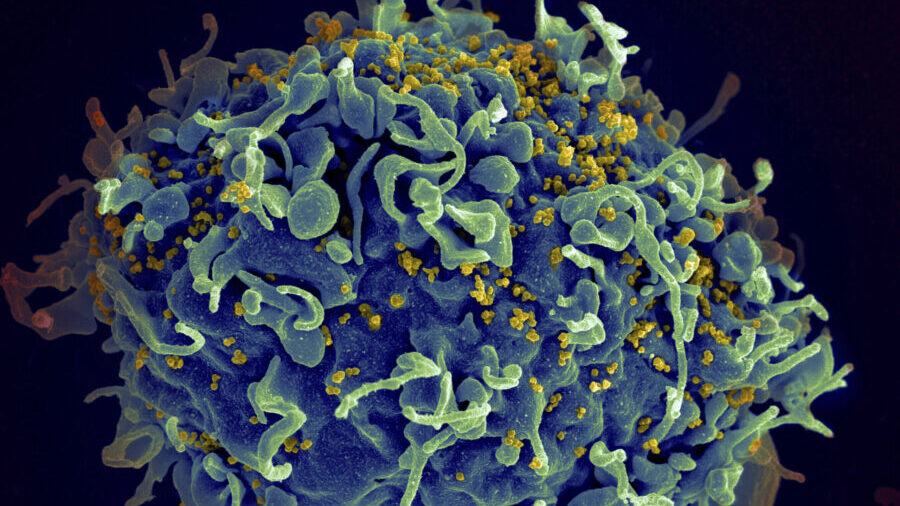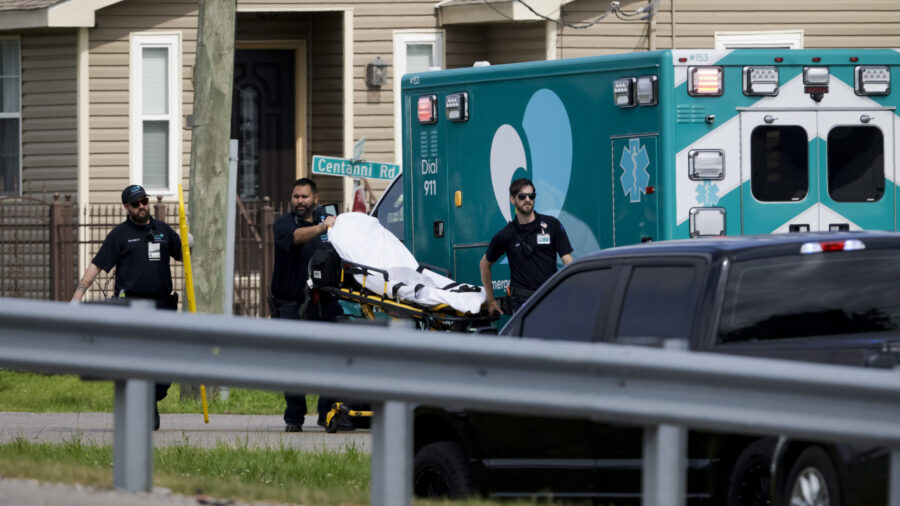US military’s additional review into deadly Kabul airport attack finds troops did not see bomber before attack
Apr 15, 2024, 9:14 AM

This image from a video released by the Department of Defense shows US Marines at Abbey Gate before a suicide bomber struck outside Hamid Karzai International Airport on August 26, 2021, in Kabul, Afghanistan. Mandatory Credit: Department of Defense/AP via CNN Newsource
(CNN) — An additional review by the US military into the deadly Abbey Gate bombing during the Afghanistan withdrawal in 2021, which aimed to clear up outstanding questions about the attack, has concluded that service members had not previously seen the suspected bomber ahead of the attack, but believed they had because of conflated intelligence reporting.
“Over the past two years, some service members have claimed that they had the bomber in their sights, and they could have prevented the attack,” one of the officials on the supplemental review team told reporters on Friday. “But we now know that is not correct.”
The bomber was identified as Abdul Rahman al-Logari, a member of ISIS-K. The terror group identified al-Logari as the bomber hours after the attack, but US officials had not yet publicly confirmed he carried out the attack. Officials also confirmed that al-Logari had been released by the Taliban from a prison near Kabul just days before the attack, which CNN previously reported.
The military will hope the new review clears up outstanding questions about the circumstances of the attack, particularly those from family members of the 13 US service members killed, some of whom have questioned the conclusions of the military’s original review, which was presented in 2022.
The supplemental review was officially announced by US Central Command in September last year, just days after families of the fallen troops demanded answers on the bombing during an emotional congressional roundtable.
The review in part addressed public testimony by Sgt. Tyler Vargas-Andrews, a Marine Corps sniper who told Congress last year that he saw a man who fit the description of the suicide bomber near Abbey Gate prior to the attack.
While the review team officials who briefed reporters never named Vargas-Andrews or any others who have spoken publicly about the bombing and the withdrawal, they denied parts of his public account, including that a man he saw prior to the attack was the bomber.
The Army and Marine officials who conducted the supplemental review told reporters on Friday that al-Logari arrived just hours before the deadly blast on August 26, 2021, that killed scores of civilians and 13 US service members — 11 Marines, one soldier, and a Navy corpsman.
Officials said that service members believed another man to be the bomber at the time. But the supplemental review compared a photo of the man with photos of al-Logari after US intelligence confirmed he was the bomber and found the “strongest negative possible rating” that the two people were the same.
The US had photos of al-Logari from his time in detention before he was released by the Taliban, officials said.
The supplemental review, which began in June of last year and was conducted by US Army Central, included 52 additional interviews on top of the more than 100 already conducted in the original US Central Command investigation, which was released in February 2022.
The new review ultimately did not change the findings from CENTCOM’s original investigation, which found, among other things, that the bombing was not preventable at a tactical level.
The review team officials said told they interviewed current and former service members — some of whom have since retired or left military service — across 24 different locations, taking officials as far as Okinawa, to conduct the interviews.
“I think it’s also very clear to us that as you talk to the different individuals, 190 total, every single one of them had a different perspective,” one of the review team members said. “And I think that’s very important to note. So our job during the investigation was to take all these different perspectives and put the pieces together from those different perspectives.”
‘Exhaustive’ review
A review team member told reporters the review was “exhaustive,” and answered the remaining questions about the bombing.
Officials said that a significant part of the confusion about what happened on August 26 stemmed from a conflation of actual intelligence reporting with what is known as spot reporting, which is when a service member would report something suspicious they’d observed to their command.
On August 25, two kinds of reports came through: an intelligence report and a spot report from Marines with the 24th Marine Expeditionary Unit. The intelligence report offered a vague description of who to be on the lookout for — someone in loose clothes, with groomed hair and carrying a black bag of explosives.
The same day, Marines submitted a spot report of a military-aged male, wearing a “beige man dress” and carrying a black bag, walking with a child toward the North Gate of the airport.
By the morning of August 26, those reports had been conflated into one, officials said, leading the sniper team to request permission to engage a bald man wearing black clothing and a backpack, who they saw sitting with a teenager.
They were ultimately denied permission to engage, and lost sight of the man in the crowd. Seven hours later, the bomb detonated at Abbey Gate.
The officials rejected the idea that the sniper team and others spent too much time focusing on the wrong suspect, saying that service members at the gate were “vigilant at all times.”
“They identified the bald man in black around (7 a.m.), lost sight of him around 10am. The attack didn’t occur until seven and a half hours later. So it’s not as if they’re staring at one location and then a bombing happened at another location simultaneously, there are seven half hour time difference. So based on our assessment … they’re doing what they’re supposed to be doing. They identified a possible threat, they’re evaluating that threat, and they’re operating based on the information they had available to them at the time.”
The review team also denied claims that the sniper team’s battalion commander did not know the rules of engagement. They said the battalion commander visited the sniper tower in-person on the morning of August 26, where they pointed out to him the bald man in black that they believed to be a suspect.
The officials explained that the team believed the man to be suspicious because he appeared to have a “lack of interest in being evacuated” and was simply sitting and observing the evacuation.
The sniper team leader briefed their battalion commander on their concerns, and said that he was an “exact match for the description of the bomber,” a member of the review team said.
“Now what is said next between the snipers and the battalion commander in the tower is unclear, but any portrayal of these events showing the battalion commander did not understand the rules of engagement are just not supported by the evidence,” the review team member told reporters.
Among the other findings in the additional review was that it is unlikely there was an IED test-run ahead of the August 26 attack, but officials could not rule it out, and that leaders were “routinely present and engaged at all levels.” Officials also said Friday that the review affirmed that use of excessive force by the Taliban led to civilian deaths.
Ultimately, officials said the supplemental review reaffirmed that US troops on the ground during the withdrawal “believed that what they were doing mattered.”
“As we conducted the supplemental reviews, it became very clear to us that service members believed that what they were doing mattered, that it made a difference, and that it was important. And they remained undeterred, even with the increased threat reporting,” the review member said. “And though the new information did not change our Abbey Gate findings, it reaffirmed what we found two years ago, and I think it helped provide additional clarity.”
The-CNN-Wire™ & © 2024 Cable News Network, Inc., a Warner Bros. Discovery Company. All rights reserved.













